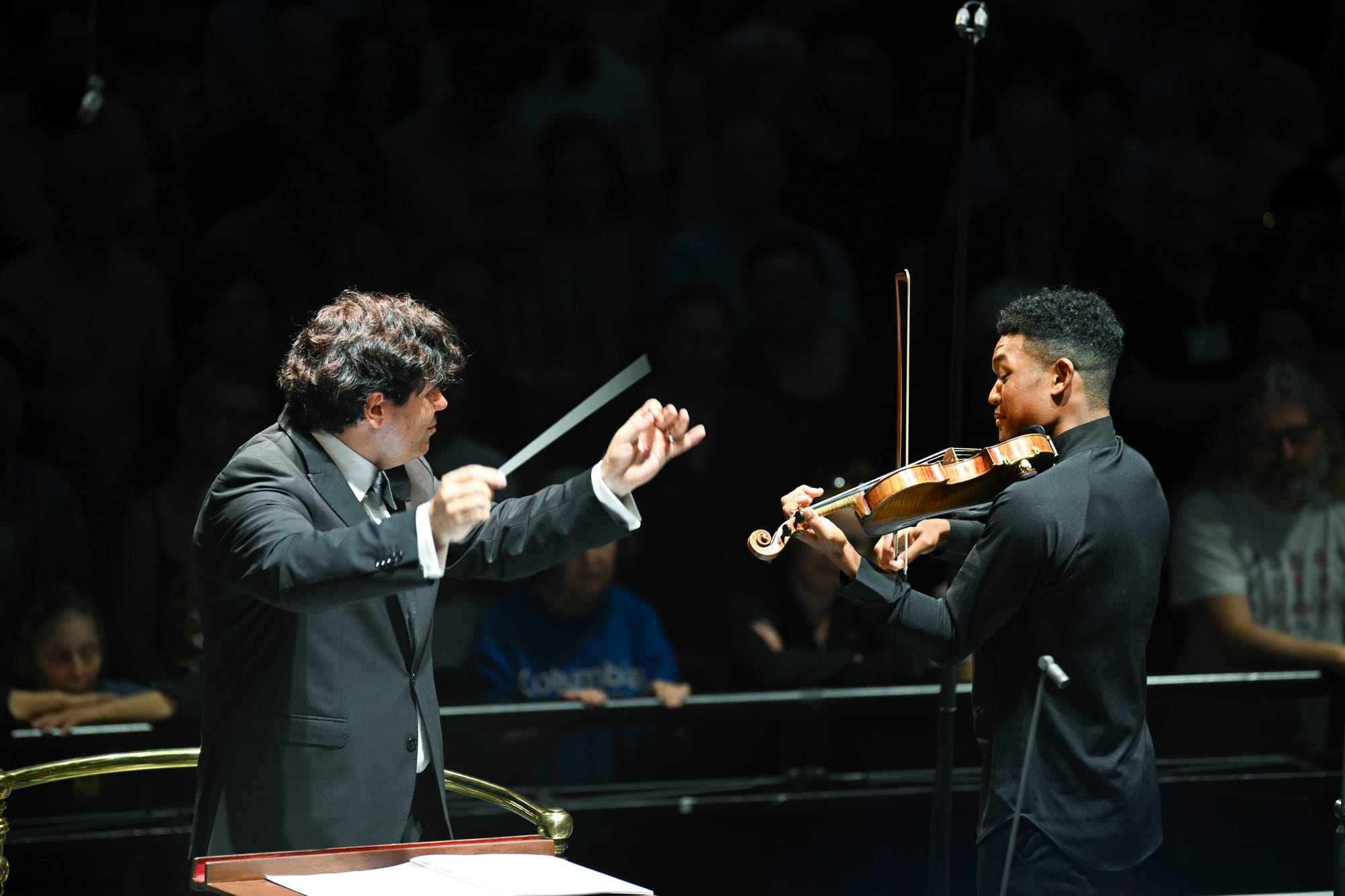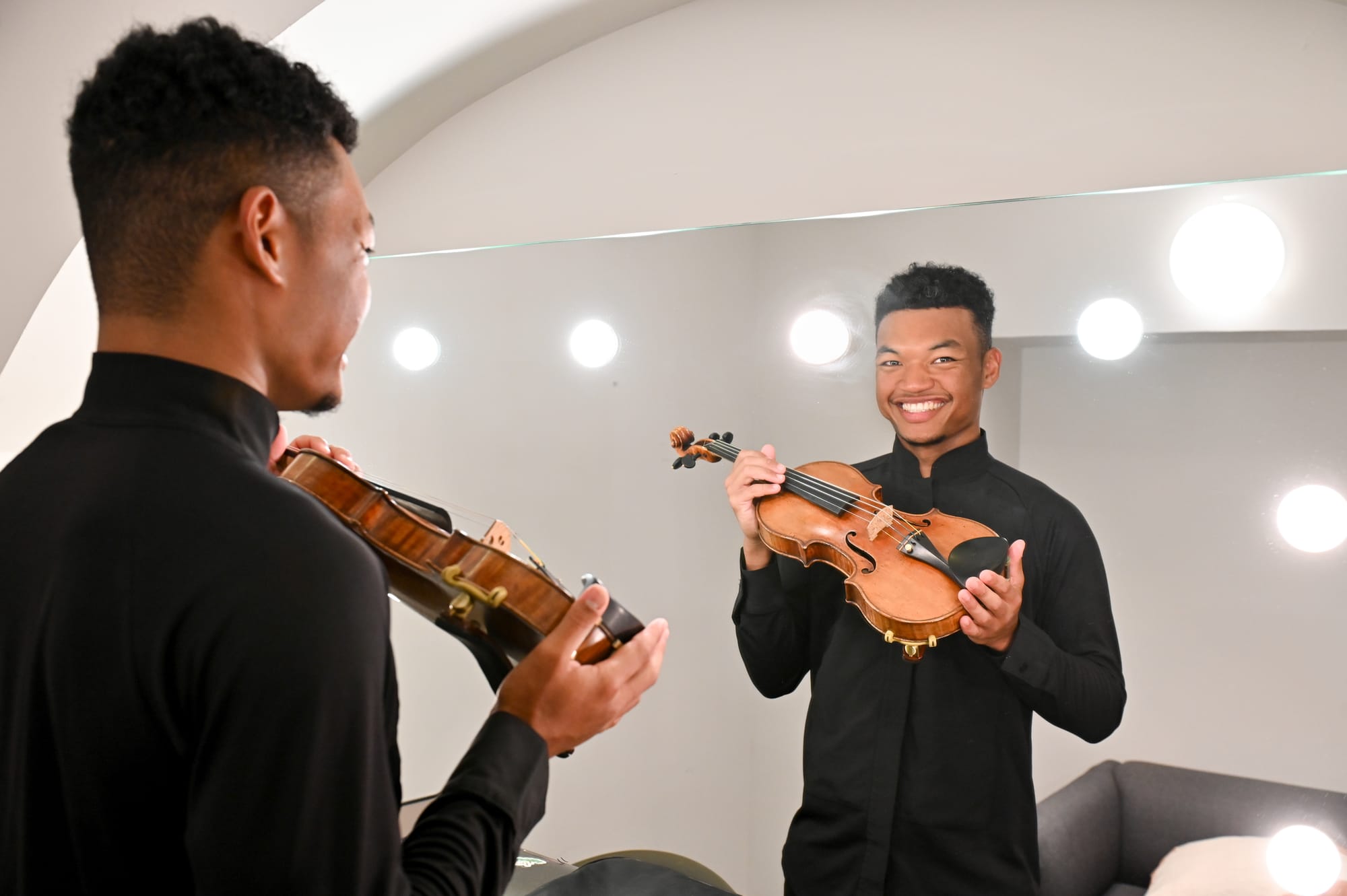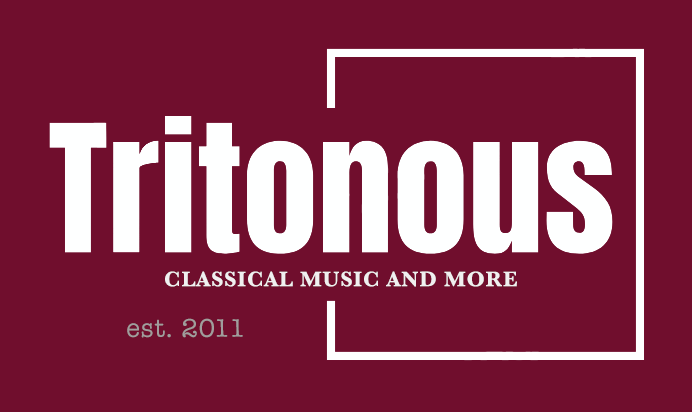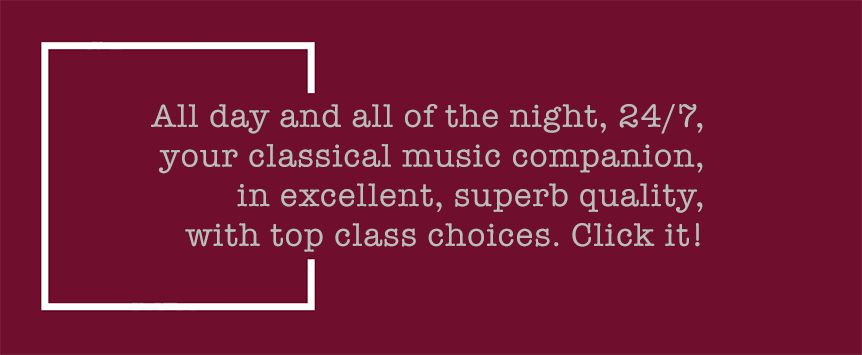
PROMS: French Night with the Orchestre National de France Randall Goosby (violin); Orchestre National de France / Cristian Măcelaru (conductor). Royal Albert Hall, London, 23.07.2025
Ravel Rapsodie espagnole (1895, 1907/08)
Joseph Bologne, Chevalier de Saint-Georges Violin Concerto in G, Op. 8 (1776/7)
Charoltte Sohy Danse mystique, Op 26 (1922)
Chausson Poème, Op. 25 (1896)
Ravel La valse (1919/20)
A ravishing, early-start Prom here (no encores from either soloist or orchestra, presumably to make way for the later event). Ravel bookended the evening, as well he might in his anniversary year. Rapsodie espagnole headily celebrates Spain (as does the composer’s contemporaneous L’heure espganole). There is something about a French orchestra playing French music, of course, and the Orchestre National de France with their Music Director (and Music Director Designate at Cincinatti) Cristian Măcelaru provided a perfectly atmospheric “Prélude à la nuit,” the opening string descending figure perfectly even Pairs of woodwind were impeccably tethered, clarinets in particular just so together. The broadcast does not quite covey just how perfectly placed (and played) the bass clarinet was in the ‘Malagueña’ (Renaud Guy-Rousseau); rhere, virtuosity me sensuality. Similarly, the slinky rhythms and melodic shapes of the slow ‘Habanera,’ with its foggy echoes of Carmen, were exquisite. But then came ‘Feria’ (Festival), uncompromisingly rapid and delivered with sparkle (that chattering piccolo!) and panache. The way Măcelaru can have his players move from hyper-energised activity to supplicatory swoon in a heartbeat is a miracle. The mix of accuracy and atmosphere put me in mind of Monteux …

The story of Joseph Boulogne is certainly film-worthy (indeed, the current soloist, Randall Goosby, played on the 2022 film Chevalier). Goosby specults he idea of Bologne as show-off because of his mixed-race origins is interesting. The Violin Concerto in G, Op. 8 makes its first appearance at the Proms – Goosby played on the ex-Strauss 1708 Stradivarius (perfect for this late 18th-cenury piece, therefore). Interesting, too, how Măcelaru had the orchestra create a whole new sound, gracious, perfectly together (first and second violins as much as one as the clarinets in the earlier Ravel). Goosby played with a light sound, but one that projected perfectly (at least to the stalls). The concerto itself holds a first movement that is full of joy (and, to be frank, the odd page of filling). There is no cadenza to the first movement, but with writing like this, it really does not need one: the violin soars and swoops, often higher than Mozart essayed in his concertos. The slow movement brings an instrumental aria (much as Mozart often did). There was a nice chamber music feel to this performance the orchestra perfectly preparing the ground for Goosby’s silken line. And now there is a cadenza, replete with stopping and superbly managed; but it was the beauty of the first entrance of the solo violin in this movement that resonates on. Goosby is the real deal (he studied with Perlman and Catherine Cho at Juilliard). But it was not only Goosby’s eloquence that made this such a success: Măcelaru had his players shade the orchestral contribution with such love and care. Here, there is a cadenza, complete with some exquisite sopping from Goosby. The finale, a rapid Rondeau, contains a perfectly judged minore second episode in which the orchestra takes (restrained) centre stage against a very agile mid-range violin; this is one of the most memorable passages of the work.
Saint-Georges (as he apparently wanted to be known) has achieved currency recently both via film and recordings (primarily on Naxos); long may the explorations continue!
Charlotte Sohy’s Danse mystique was written around the time of Ravel’s La valse, and so presenting the wo back-to-back works well. Sohy was a student of Alexandre Guilmant and Vincent d’Indy at the Schola Cantorum, where she met her husband-to-be, composer Marcel Labey (1875–1968). The idea behind the Danse mystique is that it is the sacred dance of a young woman who brings light to the world. In Rite of Spring fashion, although less viscerally, she collapses at the end: during the course of the wok, Nature becomes more powerful, while the dancer becomes weaker. The music has a kaleidoscope-like way with dissonances: they are constantly on the move, The climax is centrally placed; there is a gradual ‘fade’. There is no doubting the ‘Frenchness’ of this music, but Sohy has her own signature. And while Ravel’s ghost might occasionally hover, so does Scriabin’s (in the trumpet writing, and the luscious high string lines, which latter might also be heard in relation to early Schoenberg). There is also a compositional confidence from the composer; it seems incomprehensible that the work’s initial reception should have been lukewarm (it was premiered January 14, 1923). And yet, writing in Le Ménestrel, Paul Bertrand called Danse mystique ‘irritatingly insignificant’. This performance proved otherwise (as does the recording by this orchestra, but under Nikolai Czeps-Znaider, on the BruZane label). A sequence of discs of Sohy’s music has been released on the La Boite à Pepites label (orchestral, chamber, and piano music discs). There is, blissfully, much to explore and our thanks are surely due to Măcelaru and his orchestra for bringing Sohy to the Proms.
Far better known is Chausson’s Poème for violin and orchestra. Inspired by Turgenev (The Song of Triumphant Love), the piece’s slow unfolding seemed the perfect complement to the Sohy. Curiously, some of the violin’s ruminations seemed to hearken back to the second movement cadenza of the Saint-Georges …. intra-concert speculations aside, his was a splendid performance, the orchestra once more capturing that sense of half-light and yet true detail and transparency.
We should be grateful, perhaps, that this was not one of those ultra-hot Summer’s days: there was a lot of cushioned, perfumed music here that could have led the audience into a state of soporific stupor. At least Ravel’s La valse takes us to a place of light. It was at the Proms, in 1912, that La valse received its UK premiere (under the baton of Sir Henry Wood). Măcelaru enabled us to hear the music’s heartbeat at he opening; again, detail was miraculous, here in the woodwind, not least the contra-bassoon (Loric Lamoureux). No missing the spirit of the dance in the doted rhythm (and an underlined side-glance at Beethoven therein, perhaps – a memory of the Scherzo of the Ninth?). Here, half-lights dominated before the final glare.; a superb performance, the close all the ore powerful because of Măcelaru’s contol of his orchestra.
For all of Gosby’s excellence, it is the Sohy hat opens doors for his listener. Bu one thing is for sure: the Orchestre National de France and Christian Măcelaru are welcome back any time.
Photos © Chris Christodoulou




.jpg?w=670&resize=670,446&ssl=1)




